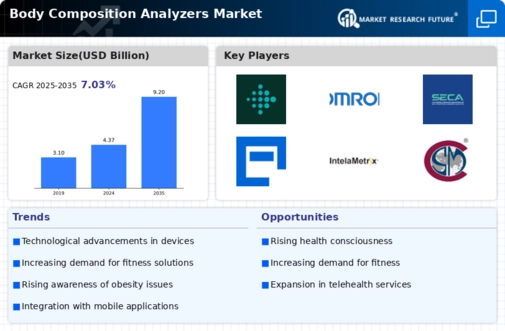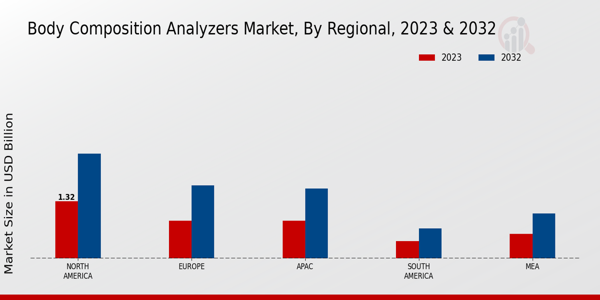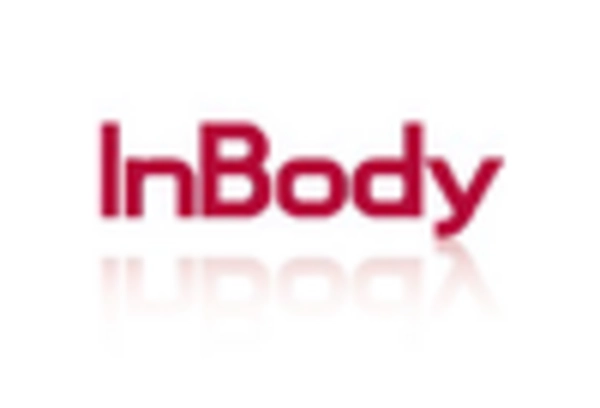Rising Health Consciousness
The Body Composition Analyzers Market is significantly influenced by the increasing health consciousness among consumers. As individuals become more aware of the importance of maintaining a healthy lifestyle, the demand for body composition analyzers is on the rise. This trend is particularly evident in fitness centers, wellness clinics, and home use, where consumers seek to monitor their body metrics regularly. According to recent surveys, nearly 60% of adults express a desire to track their health metrics, which includes body composition. This growing awareness is likely to propel the market forward, as more consumers invest in tools that provide insights into their health and fitness.
Growing Demand in Clinical Settings
The Body Composition Analyzers Market is also experiencing a growing demand in clinical settings. Healthcare professionals are increasingly utilizing these devices for patient assessments, particularly in managing obesity, malnutrition, and chronic diseases. The ability to provide detailed body composition analysis aids in developing personalized treatment plans. Recent data suggests that hospitals and clinics are investing more in advanced body composition analyzers, with a projected increase in market share of around 20% in the next few years. This trend underscores the importance of accurate body metrics in clinical evaluations and patient care.
Integration with Fitness Ecosystems
The Body Composition Analyzers Market is witnessing a trend towards integration with broader fitness ecosystems. Many manufacturers are now designing analyzers that can seamlessly connect with fitness trackers, smartwatches, and health apps. This integration allows users to have a comprehensive view of their health data, making it easier to set and achieve fitness goals. The synergy between body composition analyzers and fitness platforms enhances user engagement and encourages consistent monitoring. As a result, the market is expected to expand, with projections indicating a potential increase in sales by 15% over the next few years, as consumers seek holistic health solutions.
Increased Adoption in Sports and Fitness
The Body Composition Analyzers Market is benefiting from increased adoption in the sports and fitness sector. Athletes and fitness enthusiasts are increasingly using these analyzers to monitor their body composition for performance optimization. Coaches and trainers are leveraging this data to tailor training programs and nutritional plans, enhancing athletic performance. The market for body composition analyzers in sports is expected to grow significantly, with estimates suggesting a rise of 12% in demand over the next few years. This trend reflects a broader recognition of the role that body composition plays in achieving peak physical performance.
Technological Advancements in Body Composition Analyzers
The Body Composition Analyzers Market is experiencing a surge in technological advancements, which are enhancing the accuracy and efficiency of these devices. Innovations such as bioelectrical impedance analysis (BIA) and dual-energy X-ray absorptiometry (DEXA) are becoming more prevalent. These technologies allow for precise measurements of body fat, muscle mass, and water content, catering to both professional and personal use. The integration of smart technology, including mobile applications and cloud connectivity, is also transforming user experience. As a result, the market is projected to grow at a compound annual growth rate (CAGR) of approximately 8% over the next five years, driven by the demand for more sophisticated health monitoring tools.


















Leave a Comment